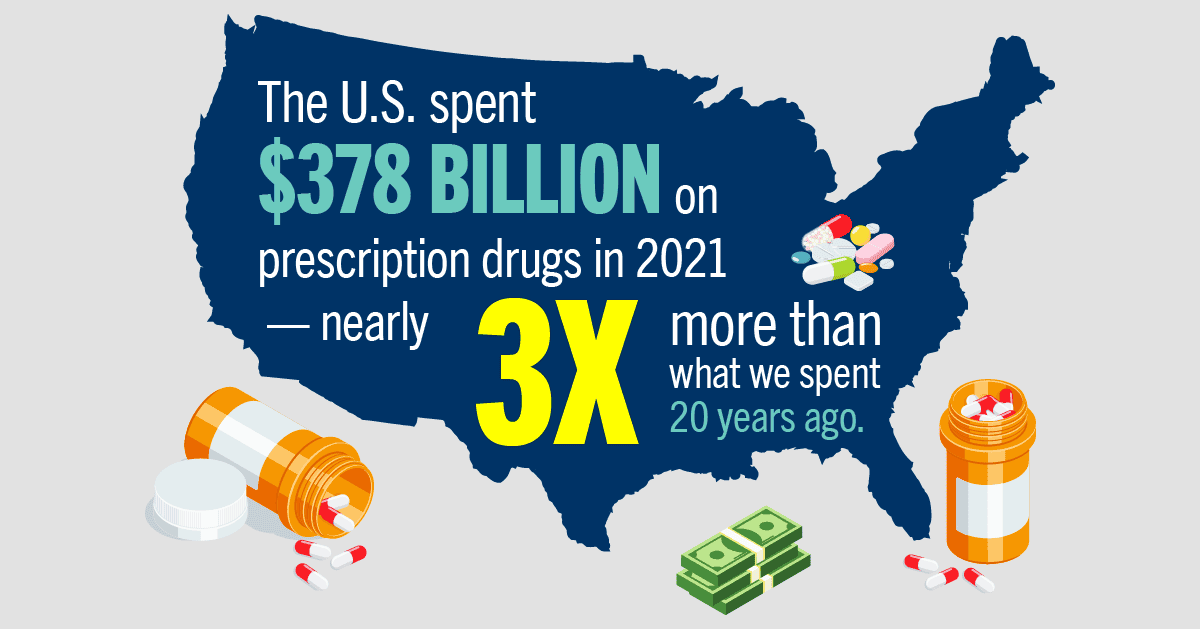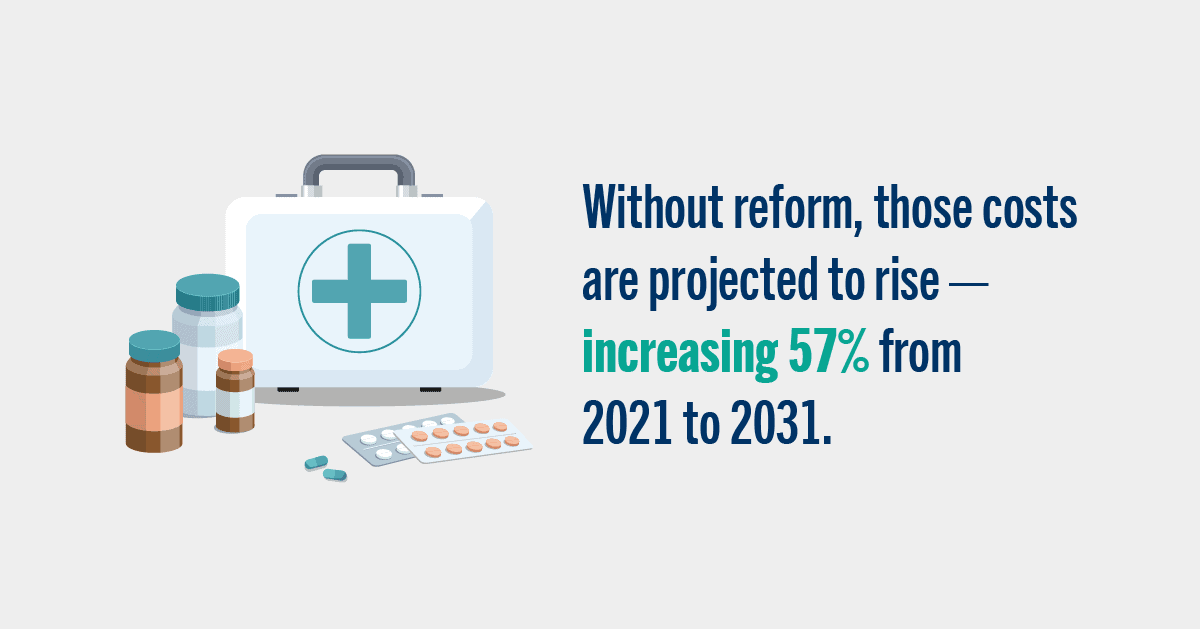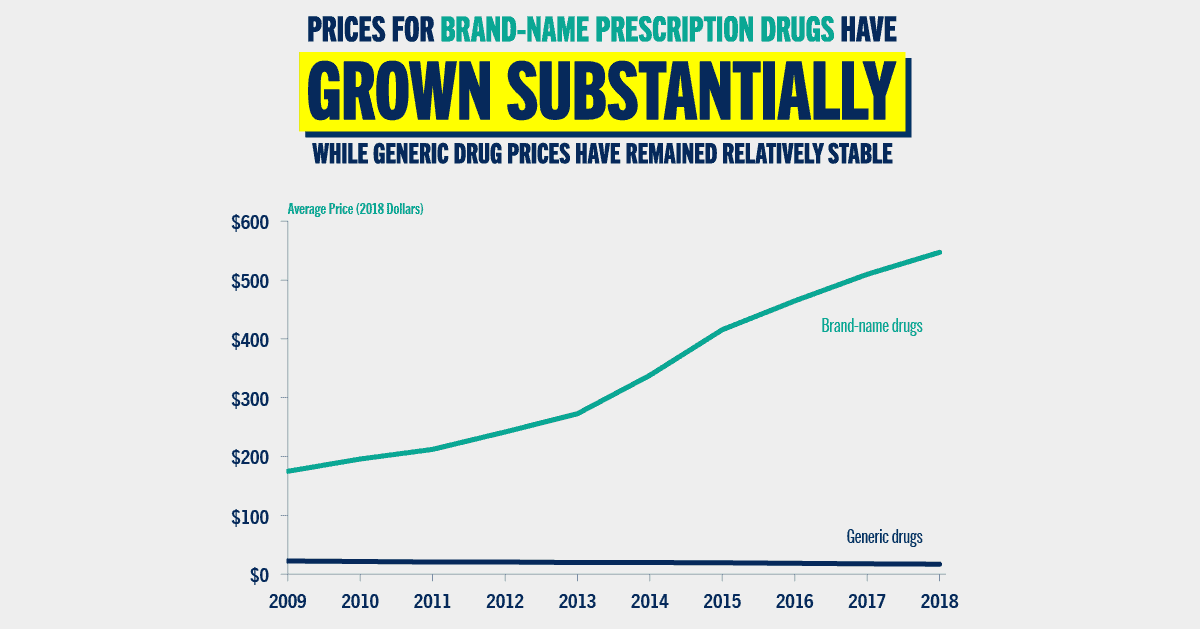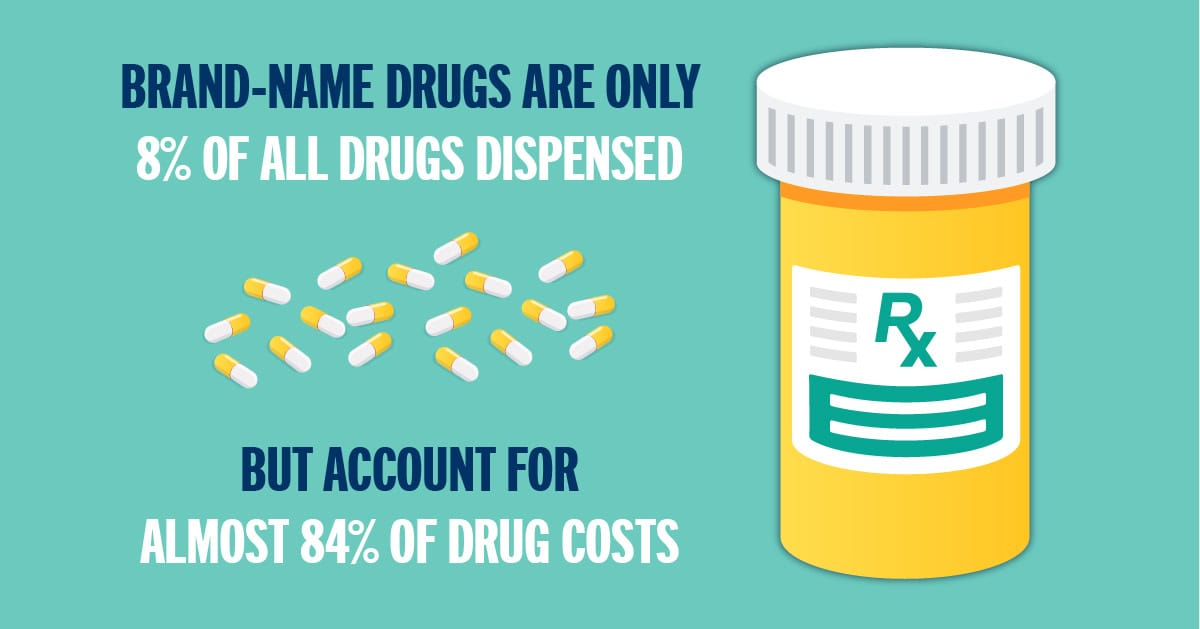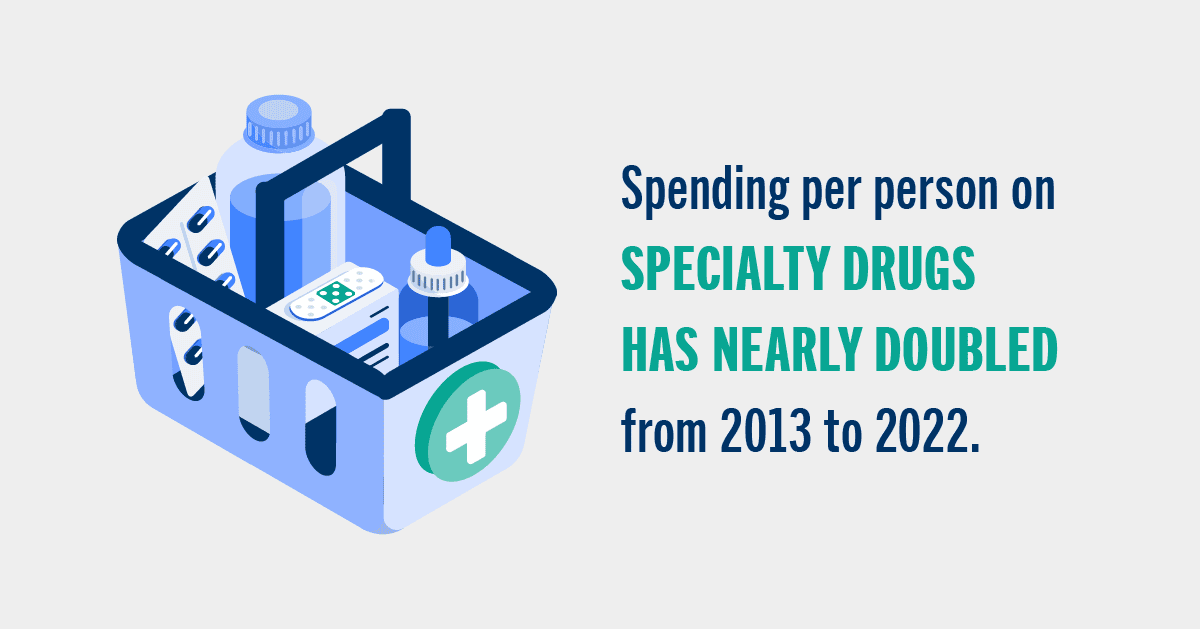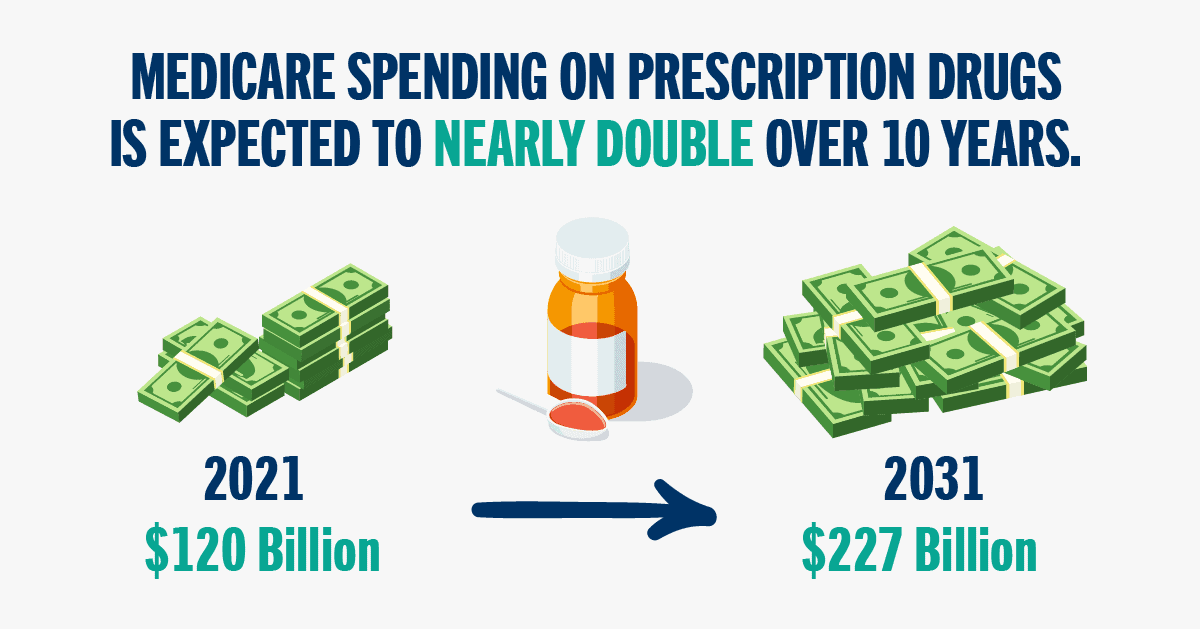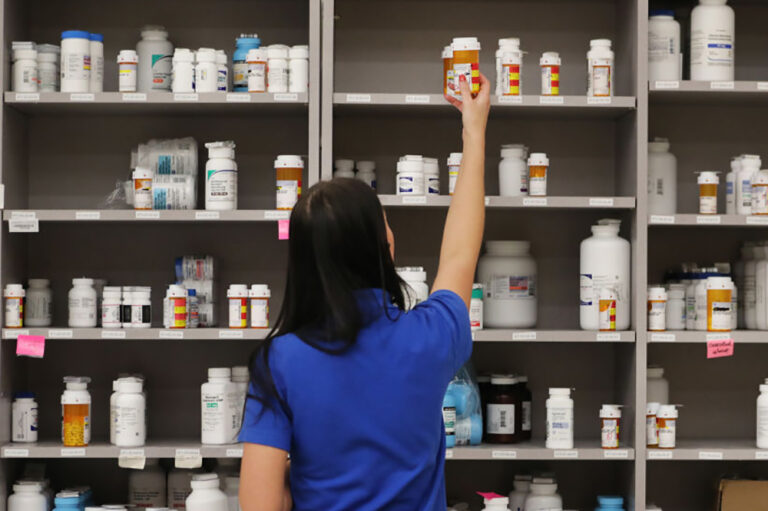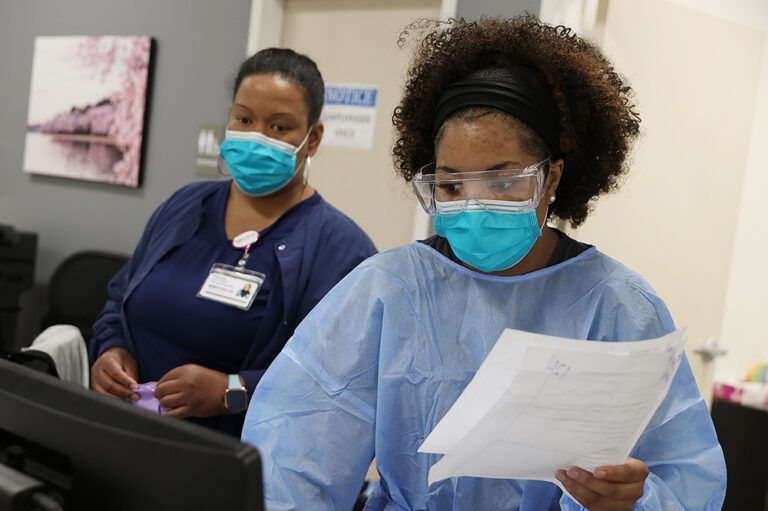Prescription drugs play a vital role in the U.S. healthcare system, enabling Americans to live longer, higher-quality lives. However, the growing cost of those drugs presents a challenge to the quality and affordability of healthcare in the United States.
U.S. spending on prescription drugs has risen substantially in the past 20 years, climbing from $141 billion in 2001 to $378 billion in 2021. Furthermore, the Centers for Medicare and Medicaid Services project that such spending will continue to grow, rising to $592 billion by 2031 — an increase of 57 percent.
That growth in spending can be attributed to many factors, including the number and type of drugs prescribed. Some common reasons include:
- High and rising prices for brand-name drugs;
- a lack of competition due to the U.S patent system;
- the use and cost of specialty drugs; and
- a lack of transparency in drug prices.
While prescription drugs can help improve health outcomes in the United States, the rising cost of those drugs can place a financial strain on American families and the country’s fiscal health. Containing prescription drug costs is important to consider for improving the U.S. healthcare system and addressing the nation’s long-term fiscal challenge.

Feel free to share this infographic on X.
Further Reading
How Does the U.S. Healthcare System Compare to Other Countries?
Despite higher healthcare spending, America’s health outcomes are not any better than those in other developed countries.
Why Are Americans Paying More for Healthcare?
High healthcare spending is not necessarily a bad thing, especially if it leads to better health outcomes. However, that is not the case in the United States.
How Does the Aging of the Population Affect Our Fiscal Health?
As a large portion of the American population lives well beyond retirement age, the total cost of providing healthcare will grow as well.
